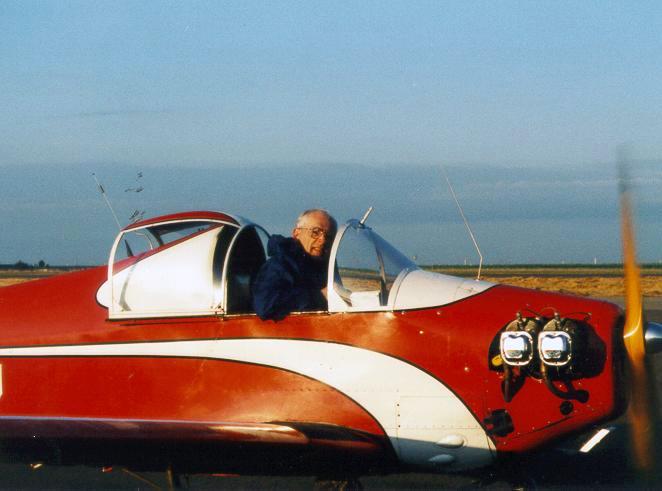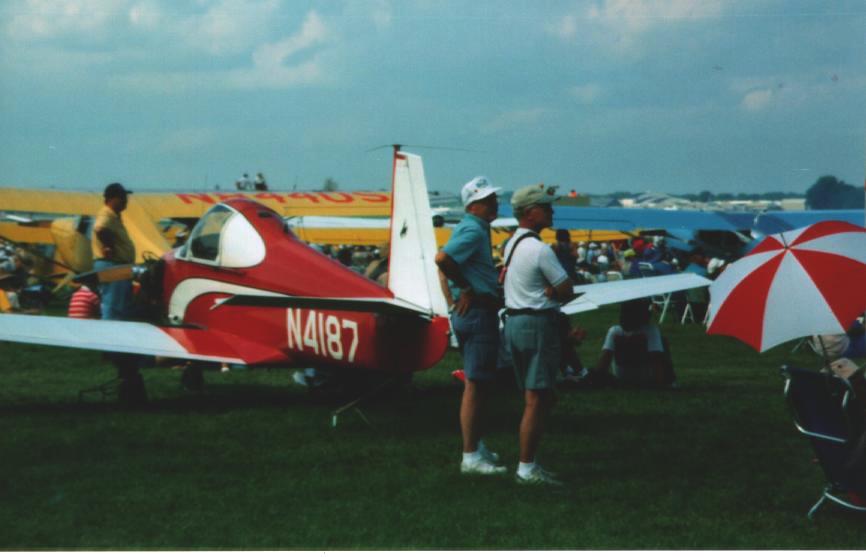"It is a 1955 model, the 4th or 5th from the end of the production
run. It is two inches wider and the canopy is two inches higher through a bubble
in the canopy itself. Being 6'-2" and 200 pounds, I really appreciate those two
inches.
"It has the standard Continental A65-8 engine in it but the engine
itself was recently overhauled by Victor Aviation in Palo Alto, CA. I suspect
this is the only A65 that is a Victor "Black Edition" engine.
"Interestingly, when I bought the plane, it had about 2,200 hours and
the engine, per the cryptic log book entry, had been overhauled in 1968. There
was no indication as to what parts were replaced, etc. and I felt fairly uneasy
flying in a 40-year-old airplane with an engine that may or may not have had a
first class overhaul. After all, every take-off and landing is over water since
I live on an island, and that water is cold enough that hypothermia gives one
less than 15 minutes. For that reason I took the plane to Victor and told him to
give it a really first class overhaul. When he disassembled the engine the only
area where there was significant wear was on the cam. Considering the 40 years
and low number of hours for that period of time I couldn't help but be very
impressed with the engine.
"As to modifications I have made, I did put a 2" venturi on the side of
the plane which powers a new turn and bank indicator. As an instrument pilot
(but not in the Mite) I feel very uncomfortable being in a plane without at
least one gyro. I wouldn't want to have to make an IFR approach in the Mite, but
I could if I had to. Again, given where I live -- the San Juan Islands of
Washington State -- and the ease with which fog can form, one cannot be too
careful.
"I also installed a 4-probe EGT which makes leaning the engine more
comfortable. Most of the flight instruments have also been replaced. It is much
easier to navigate with a Garmin GPS than to use the VOR system. I have an
electrical connection from the 12 volt battery in the baggage compartment that
will plug into the Garmin rather than use Garmin's internal AA batteries (which
then serve as a backup to the plane's battery).
"Speaking of batteries, I was surprised to find that my Mite came from
the factory with a 12 volt battery and wiring already installed, although no
generator. The wiring was to both the panel and to the wing and tail navigation
lights. I guess in those days there was no FAA requirement that one had to have
a power generation source within the plane to have lights and wiring. Obviously
with the A65-8 engine there is no generator. The Terra uses about 1 amp an hour;
the Garmin half that, so the 25 amp standard 12 volt battery lasts 15 hours
before I had to charge it. On a long cross country trip I carry a trickle
charger and hook it up to a 110 volt source overnight.
"When traveling cross county I do my best to find a hangar for the
overnights. One of the things that surprised me most about the Mite is that in
spite of many innovative features for the time, the plane came without tie down
rings on the wings. You can tie it down using the wheels, but in a strong wind
with the wing so close to the ground I have visions of doing a great deal of
damage.
"I did have the interior redone professionally, and in the process I had
pockets installed everywhere there was room. It is amazing how much more room
you feel you have when there is a place for everything. Incidentally, I use the
book of WAC charts that is published once a year for my cross country flying.
This book which must be about 12 x 17", fits in its own pocket by my left leg
under the instrument panel. I even have a pocket on the top of the nose gear
well to hold a couple of books of approach plates.
"I am often asked what I like best about the Mite, and it is clearly
being at "one" with the plane, where just thinking about turning results in the
Mite turning. I am not conscious of controlling the Mite because the Mite and I
are virtually one.
"But having said that, let me tell you that you really can have your
hands full on a gusty day with a significant cross wind on landing. The rudder
is not very large and you really have to work to get lined up --and stay lined
up -- with the runway if it is a gusty day. On days like that I would say that
the Mite is more like a bucking bronco at a rodeo rather than being "one" with
me.
"As to cross country trips, the longest was to Oshkosh three years ago.
Every New Year's eve I make a resolution that I am going to make that trip again
the following year. Hopefully I will keep that resolution this year."




